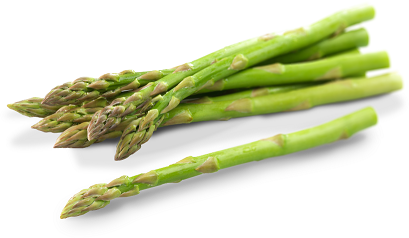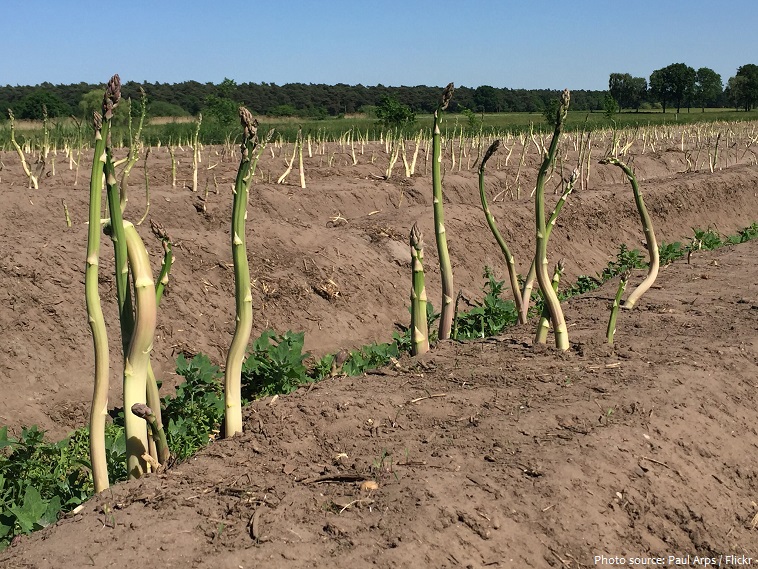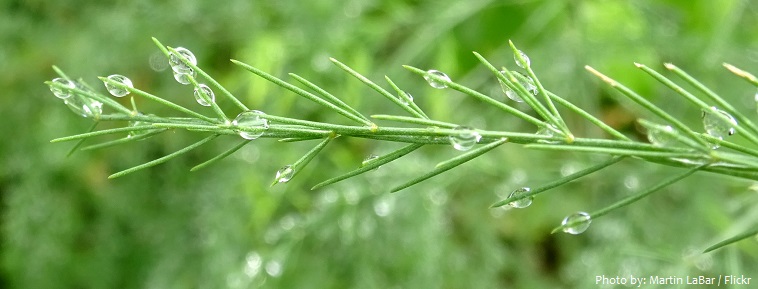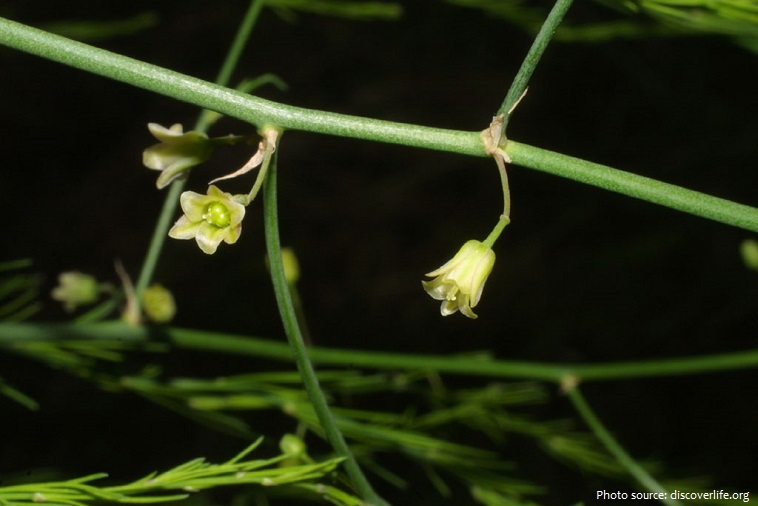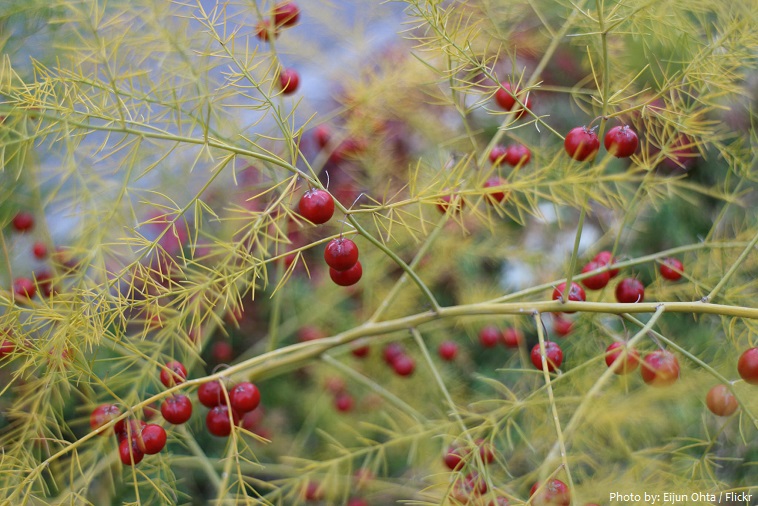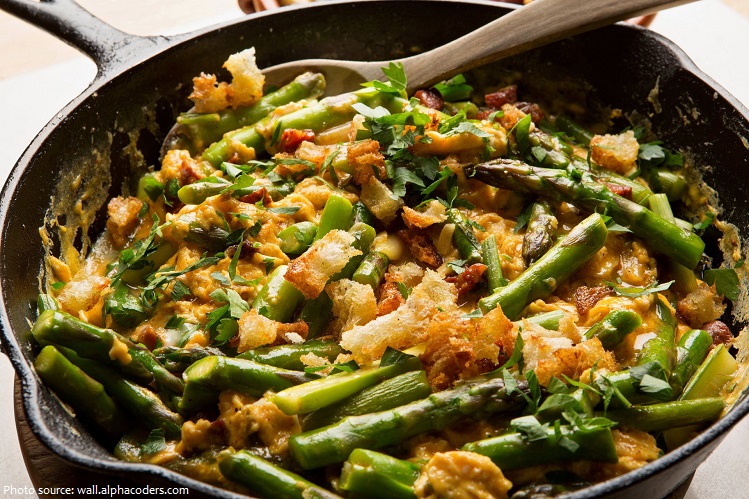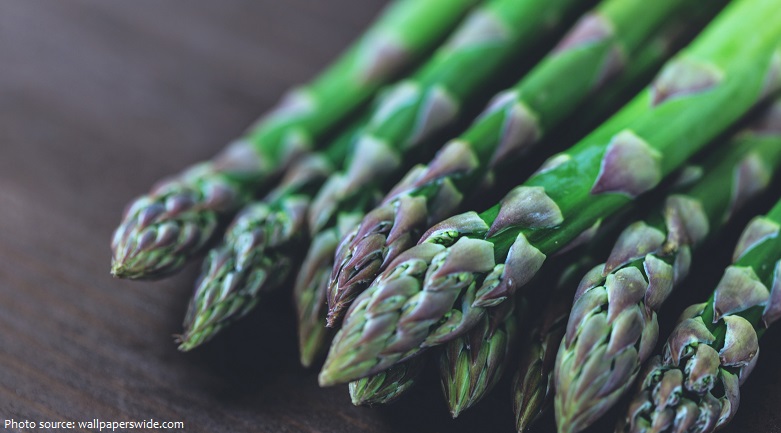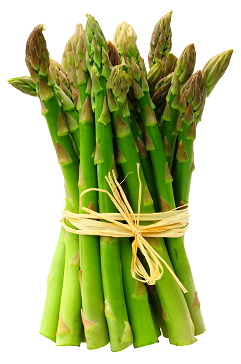Asparagus is a spring vegetable, a flowering perennial plant species in the genus Asparagus.
A distant cousin of the onion, the distinguished asparagus is also a member of the lilaceae family.
Its history goes back as far as that of the leek and has been consumed for over 2000 years.
This garden plant originated in the eastern Mediterranean countries and traces of wild varieties have been discovered in Africa.
Today, the plant grows in central and southern Europe, the Middle East, western Siberia, and northern Africa and is also cultivated worldwide, often in home gardens.
Asparagus is a herbaceous, perennial plant growing to 100–150 cm (39–59 in) tall, with stout stems with much-branched, feathery foliage.
The “leaves” are in fact needle-like cladodes (modified stems) in the axils of scale leaves; they are 6–32 mm (0.24–1.26 in) long and 1 mm (0.039 in) broad, and clustered four to 15 together, in a rose-like shape.
The flowers are bell-shaped, greenish-white to yellowish, 4.5–6.5 mm (0.18–0.26 in) long, with six tepals partially fused together at the base; they are produced singly or in clusters of two or three in the junctions of the branchlets. It is usually dioecious, with male and female flowers on separate plants, but sometimes hermaphrodite flowers are found.
The fruit is a small red berry 6–10 mm diameter, which is poisonous to humans.
Only young asparagus shoots are commonly eaten: once the buds start to open, the shoots quickly turn woody.
As a vegetable, the tender, succulent shoots of asparagus not only touches upon people’s senses of taste, touch, smell, and vision, but also provides excellent nutrition.
There are 20 calories in 100 grams (3.5 ounces) of asparagus.
The easiest way to get asparagus into your diet is to eat it raw; simply cut it up and add to your salad.
Another simple thing to do is to just steam it for a few minutes and it is done. Careful not to overcook it.
Asparagus is an excellent source of vitamin K, folate, copper, selenium, vitamin B1, vitamin B2, vitamin C, and vitamin E. It is a very good source of dietary fiber, manganese, phosphorus, vitamin B3, potassium, choline, vitamin A, zinc, iron, protein, vitamin B6, and pantothenic acid.
The health benefits of asparagus include good cardiovascular health, healthy pregnancy, improved fertility, relief from pre-menstrual syndrome, and an improved bone health. It helps to treat cancer, diabetes, hangover, cataract, rheumatism, tuberculosis, depression, neurodegenerative diseases, and convulsions. It reduces urinary tract infections and blood cholesterol. It is also good for digestive health.
The English word “asparagus” derives from classical Latin, but the plant was once known in English (prior to 1400) as “asperages” or “aspergy,” and then later (sixteenth and seventeenth centuries) as sperage, sparage, or sperach, from the Medieval Latin sparagus. This term itself derives from the Greek aspharagos or asparagos, although some believe the Greek term originated from foreign sources, likely from the Persian asparag, meaning “sprout” or “shoot.” The original Latin name has now supplanted the English word.
Asparagus vegetable is also known garden asparagus, folk name sparrow grass.
This vegetable is pictured as an offering on an Egyptian frieze dating to 3000 BC.
Greeks and Romans ate it fresh when in season, and dried the vegetable for use in winter; Roman Epicureans even froze it high in the Alps, for the Feast of Epicurus.
Emperor Augustus created the “Asparagus Fleet” for hauling the vegetable, and coined the expression “faster than cooking asparagus” for quick action.
Hippocrates, the ancient Greek doctor, used asparagus to treat diarrhoea and pains of the urethra.
In the 1st century CE, Dioscorides, the Green physician, recommended a decoction of the root to improve urine flow and to treat kidney problems, jaundice, and sciatica. He also recommended holding the chewed root against aching teeth.
China, Peru, and Mexico are the three biggest asparagus producing countries in the world.

